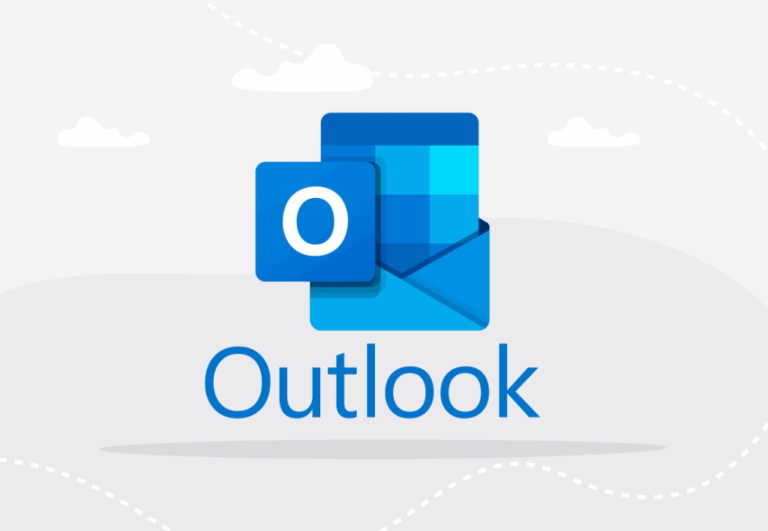The financial industry is undergoing a massive transformation, driven by the rapid advancements in technology and the increasing demand for personalized customer experiences.
Banking analytics, which refers to the use of data-driven insights to enhance banking operations and customer service, is at the forefront of this revolution. In this article, we will delve deep into five key trends in banking analytics that are shaping the future of the financial industry.
1. Predictive Analytics for Personalized Banking
As the financial industry becomes more customer-centric, banks are leveraging predictive analytics to offer personalized services. This trend is all about anticipating customer needs and delivering tailored solutions.
Customer Behavior Prediction
Predictive analytics tools are now sophisticated enough to analyze a customer’s transaction history, online behavior, and other related data to predict future actions. For instance, if a customer frequently travels abroad, the bank might offer them a tailored travel insurance package or foreign currency deals. This not only enhances the customer experience but also opens up new revenue streams for banks.
By understanding and anticipating customer behaviors, banks can also reduce the risk of fraud. For example, if a customer’s card is used in a location they’ve never visited before and doesn’t align with their typical spending pattern, the bank can flag it as a potential fraudulent transaction.
Personalized Product Recommendations
Banks are increasingly using predictive analytics to recommend products and services that align with a customer’s financial habits and goals. For instance:
- Savings products: If a customer frequently has a surplus at the end of the month, the bank might suggest high-yield savings accounts or investment opportunities.
- Loan products: For customers who frequently shop for high-ticket items or have recently browsed property listings, banks might offer personalized loan or mortgage deals.
This level of personalization not only improves customer satisfaction but also increases the likelihood of product uptake, driving revenue for the bank.
2. AI-driven chatbots and Virtual Assistants

Artificial Intelligence (AI) is revolutionizing customer service in the banking sector. AI-driven chatbots and virtual assistants are becoming the first point of contact for many customers, offering instant support and assistance.
24/7 Customer Support
In today’s digital age, customers expect round-the-clock support. AI-driven chatbots are filling this need by providing instant answers to customer queries, regardless of the time of day. These chatbots are equipped to handle a wide range of queries, from balance inquiries to transaction disputes.
Moreover, with the integration of machine learning, these chatbots are continuously evolving. They learn from each interaction, ensuring that their responses become more accurate and helpful over time. This not only enhances the customer experience but also reduces the operational costs for banks.
Transactional Assistance
Beyond answering queries, AI-driven virtual assistants are now facilitating transactions. For example:
- Bill payments: Customers can instruct virtual assistants to pay bills, set up recurring payments, or even split bills with friends.
- Investment advice: Some advanced virtual assistants offer investment advice based on the customer’s financial goals and risk appetite.
By integrating AI into transactional processes, banks are making banking more accessible and user-friendly, especially for tech-savvy millennials and Gen Z customers.
3. Real-time Fraud Detection
With the rise in digital transactions, the threat of financial fraud has also increased. Banks are now harnessing the power of real-time analytics to detect and prevent fraudulent activities.
Behavioral Biometrics
Behavioral biometrics is an emerging field that analyzes the unique ways in which individuals interact with their devices. This includes patterns like typing rhythm, touch pressure, and even mouse movements. By understanding a user’s behavior, banks can detect anomalies that might indicate fraudulent activity.
For instance, if a user typically logs into their banking app using a certain pattern of swipes and taps, and suddenly that pattern changes, it could be a sign that someone else is trying to access the account. By flagging these anomalies in real-time, banks can take immediate action, enhancing security.
Geospatial Analysis
Geospatial analysis involves examining the geographical location of transactions to detect potential fraud. For example:
- Unusual locations: If a customer’s card is used in multiple countries within a short time frame, it could indicate card cloning or other fraudulent activities.
- High-risk zones: Banks can flag transactions that occur in areas known for high rates of financial fraud.
By combining geospatial analysis with other real-time data, banks can quickly identify and mitigate potential threats, ensuring the safety of customer funds and maintaining trust in the banking system.
4. Blockchain and Decentralized Finance (DeFi)
Blockchain technology, the backbone of cryptocurrencies, is making significant inroads into the banking sector. Decentralized Finance (DeFi) platforms, built on blockchain, are challenging traditional banking models, offering more transparency and reduced intermediaries.
Smart Contracts in Banking
Smart contracts are self-executing contracts where the terms of agreement or conditions are written into lines of code. These contracts automatically execute actions when predefined conditions are met. In the banking sector, this can revolutionize processes such as:
- Loan disbursement: Once a borrower meets all criteria, the loan amount can be automatically disbursed without manual intervention.
- Insurance claims: In the event of a valid claim, smart contracts can ensure immediate payout, eliminating lengthy verification processes.
By automating these processes, banks can reduce operational costs and enhance customer satisfaction by offering faster, more efficient services.
Peer-to-Peer Lending Platforms
DeFi platforms are enabling peer-to-peer (P2P) lending, bypassing traditional banking intermediaries. These platforms allow individuals to lend or borrow funds directly from others, based on mutually agreed terms. Key benefits include:
- Competitive interest rates: Without the overheads of traditional banks, lenders can offer better rates to borrowers and still enjoy decent returns.
- Financial inclusion: P2P platforms can cater to individuals who might be underserved by traditional banks, offering them access to credit.
While DeFi platforms present numerous opportunities, they also come with risks, especially in unregulated environments. Banks looking to venture into this space must ensure robust security measures and compliance with relevant regulations.
5. Advanced Data Visualization Tools
As banks handle vast amounts of data daily, presenting this data in an understandable format is crucial. Advanced data visualization tools are enabling banks to interpret complex data sets, offering actionable insights in real-time.
Interactive Dashboards for Decision-Making
Modern data visualization tools offer interactive dashboards that allow bank executives to drill down into specific data points, enabling informed decision-making. Features include:
- Real-time updates: As transaction data flows in, dashboards update in real-time, offering the latest insights.
- Customizable views: Users can tailor the dashboard to display metrics most relevant to them, from loan disbursement rates to customer acquisition metrics.
By having a clear view of operations, banks can quickly identify areas of concern or opportunity, ensuring timely interventions.

Customer Insights Visualization
Understanding customer behavior is paramount for banks. Data visualization tools can map out customer journeys, highlighting:
- Spending patterns: Understand where customers spend most and tailor product offerings accordingly.
- Customer feedback: Visual sentiment analysis can offer insights into areas of customer dissatisfaction, allowing banks to address concerns proactively.
By visualizing customer data, banks can enhance their service offerings, ensuring they meet and exceed customer expectations.
FAQ
How does blockchain ensure security in banking transactions?
Blockchain operates on a decentralized ledger system where each transaction is encrypted and added to a “block.” Once verified, this block is added to a chain of previous transactions, making it immutable. This means that once a transaction is recorded, it cannot be altered without altering all subsequent blocks, which is virtually impossible. This inherent structure ensures high levels of security against tampering and fraud.
Are AI-driven chatbots replacing human customer service agents?
While AI-driven chatbots are becoming more prevalent, they are not entirely replacing human agents. Instead, they handle routine queries and tasks, allowing human agents to focus on more complex issues that require empathy, judgment, and nuanced understanding.
How do banks ensure the privacy of customer data with predictive analytics?
Banks employ stringent data protection measures, including data anonymization and encryption. Predictive analytics often uses aggregated data, which doesn’t reveal individual customer identities. Additionally, banks are bound by strict data protection regulations that mandate the safeguarding of customer information.
What’s the difference between traditional P2P lending and DeFi-based P2P lending?
Traditional P2P lending platforms act as intermediaries, connecting borrowers and lenders, and they often have centralized control and decision-making processes. DeFi-based P2P lending operates on decentralized platforms, often using smart contracts to automate processes, reducing the need for intermediaries and offering more transparency.
How do real-time fraud detection systems differentiate between genuine and fraudulent transactions?
Real-time fraud detection systems use a combination of historical data, behavioral analytics, geospatial analysis, and machine learning algorithms to assess the risk level of each transaction. If a transaction deviates significantly from established patterns or exhibits known signs of fraud, it’s flagged for review.
Final Words:
The intersection of banking and technology is a dynamic space, brimming with innovations that promise to redefine the way we perceive and interact with financial institutions. As we’ve explored, from predictive analytics to blockchain, the future of banking is not just digital—it’s intelligent, proactive, and tailored to individual needs.
As consumers, it’s an exciting time to witness and be a part of this transformation. As industry professionals, the challenge lies in harnessing these trends, ensuring security, transparency, and trust, and paving the way for a more inclusive and efficient financial ecosystem.
Related Posts:
- Top 7 Augmented Reality Trends for 2023: Next Frontier
- Top 5 Next Generation Data Center Trends You Need to…
- Why Financial Management at Big Law Firms is a…
- Why Your Enterprise Analytics Strategy Matters
- How Lower-Middle Market Private Equity Is Driving…
- The Importance of Hiring an Experienced Attorney if…








